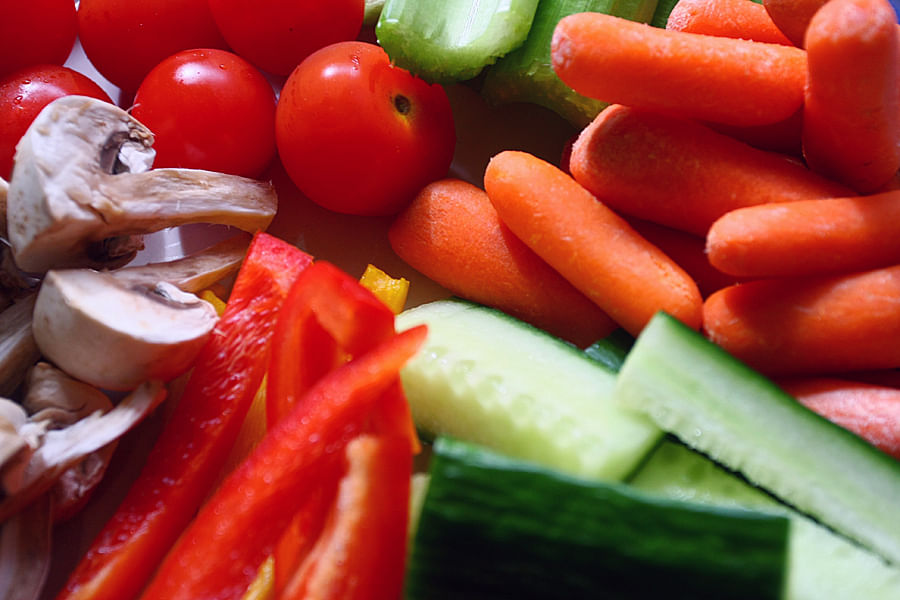
Ever looked at a dish and wondered why you can’t get your attempt to look like that? A dish needs to be a feast for the eyes before it becomes a feast for the stomach.
Whether it is on a television show or at a gourmet restaurant, presentation of a dish will have the mouth watering and one would want to try it at home.
The end result of attempts at home may not necessarily fetch the desired results, at least the visual part of it.
What we try at home does not look great always mainly due to one reason – how the vegetables are cut.
There are several kinds of cuts chefs use for cooking different dishes. The cut depends on the dish, the cooking time, whether it is for the dish or to be served as an accompaniment, if it is for garnishing or a salad.
Cutting vegetables is nothing short of art and anyone passionate about cooking will say so.
There are a few basic cuts and there are many other derivatives that are used according to the dish being cooked.
Chiffonade
This is probably one of the most delicate cuts in the list and is specific to leafy vegetables like spinach, cabbage, lettuce and the like. The name is derived from the French word chiffon that means ribbon. The leaves are rolled and cuts of about 1mm are made. The end result is finely chopped leafy vegetable that can be used for salads.
Julienne
This is to cut carrot, capsicum, radish, potato and such harder vegetables the size of matchsticks. Mainly used in Chinese cooking for noodles, stir fries or for salads and fine garnishing. This is similar to Chiffonade, which is for leafy vegetables and this is for harder vegetables.
Allumette
This cut is similar to Julienne but slightly thicker. For vegetables that are going to be served raw, this cut can be a garnish or used in salads. Carrot, radish, capsicum and such vegetables can be cut this way. The typical width of one piece is about 3mm on all sides and 5cm long.
Brunoise
Cutting julienne into bits along the length gives us this cut. This is basically making very fine cubes of Julienne-cut vegetables by cutting along the length. Vegetables cut in this fasion can be used for soups, stuffing or garnishing. The size of Brunoise-cut vegetables can vary from 1.5 to 3mm.
Dice
This is also a pretty simple cut and the vegetable or fruit is cut into cubes. A large dice can be about 20mm, medium 13mm and small dice 6mm. The smaller dices are called Brunoise.
Paysanne
This is a rougher cut as compared to the ones above and the word itself means country style. They can be flat, square, round or triangular cuts and vegetables cut this way can be used for soups or garnishing. Size of the cut vegetable can be about a centimetre.
Batonnet
The meaning of the word is vegetable cut into the form or a baton or stick. The edges are squared off. Vegetables to be served as accompaniments can be cut in this fashion. The size of each stick is approximately 6mm in width and about 2.5 inches in length.
Slice
This is a pretty simple cut that most of use for salads.
Wedge
This cut is commonly seen in the case of lemon and other citrus fruits. The wedges are cut and are to be squeezed on salads. After the wedges are cut, the remaining centre part of the lemon is squeezed for juice.
Rondelle/ Roundel
A carrot or radish cut lengthwise is Rondelle. In Indian cuisine, carrot and radish are commonly used in curries. Each Rondelle cut into half from the flat side is called Half Moon.
Knives and grip
It is also important to note that a sharp and good quality knife has to be used. A dull knife will never let the user get these elaborate and delicate cuts. Holding the knife is equally important. The blade should be held with the thumb and index finger so as to get good control. The remaining fingers are wrapped around the handle. If a good quality knife is being used, a bamboo or wooden board is recommended so that the cutting surface does not blunt the edge of the knife.
Bouquets or brickbats? Please let us know in the comments below.